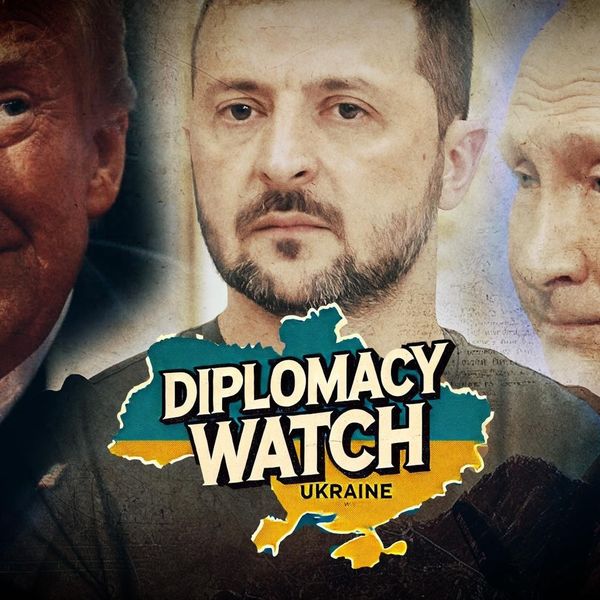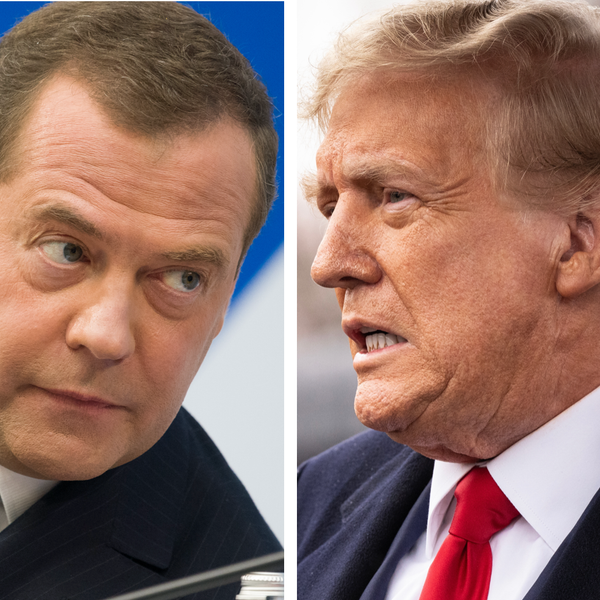If accounts of President Donald Trump’s decision to strike Iranian nuclear facilities this past month are to be believed, the president’s initial impulse to stay out of the Israel-Iran conflict failed to survive the prodding of hawkish advisers, chiefly U.S. Central Command (CENTCOM) chief Michael Kurilla.
With Kurilla, an Iran hawk and staunch ally of both the Israeli government and erstwhile national security adviser Mike Waltz, set to leave office this summer, advocates of a more restrained foreign policy may understandably feel like they are out of the woods.
They would be sorely mistaken.
CENTCOM’s incoming commander, Vice Admiral Brad Cooper, is Kurilla’s deputy, and he would become just the second Navy officer ever to command CENTCOM. Unanimously confirmed by voice vote in the Senate and championed by both Secretary of Defense Pete Hegseth and his immediate predecessor, Cooper’s Senate confirmation testimony indicates more continuity than change.
For an administration that once talked a big game about realigning U.S. foreign policy in a more restrained direction, this selection implies the opposite: an indefinite commitment to U.S. primacy in the region in the name of counterterrorism and great power competition.
Forces in Iraq and Syria don't make America safer
In his responses to written questions for his confirmation, Cooper argued that the United States should retain military forces in Iraq and Syria to “maintain the defeat of ISIS.” The primary reason for this, he argues, is that the U.S. presence denies the terrorist group safe haven from which to attack the U.S. homeland.
Yet, as the Trump administration itself acknowledged by reducing U.S. troop levels in Syria earlier this year, ISIS lacks the capacity to pose a serious threat to the U.S. homeland and other regional actors have an interest in suppressing ISIS. As Rose Kelanic at Defense Priorities writes, “While ISIS has morphed into an international ‘brand’ adopted by affiliates in far-off locales, notably ISIS-Khorasan (ISIS-K), a group based in Afghanistan and Iraq that was responsible for attacks in Russia and Iran earlier in 2024, whatever original ISIS elements still exist in Syria appear incapable of conducting sophisticated, international terrorist attacks.”
Furthermore, the “safe haven” concept has serious flaws — namely, that it is incredibly difficult to mount sophisticated military operations across the globe in a dysfunctional environment, especially given sophisticated U.S. over-the-horizon intelligence and counterterrorism capabilities and the interest regional partners have in suppressing terrorism. This is precisely why Afghanistan did not become a safe haven for terrorism after the 2021 U.S. withdrawal.
Finally, the vulnerabilities of U.S. forces in Iraq and Syria exceed the purported benefits. U.S. military infrastructure in Iraq and Syria sits in proximity to Iranian forces and extremist groups while lacking sophisticated air defense systems. It is little wonder that these forces have faced more than 400 attacks since the October 2023 breakout of the Gaza war, according to CENTCOM and the Office of the Secretary of Defense. While there have thankfully been few casualties, withdrawing U.S. troops entirely removes that risk.
Great power competition is a bad framework for the region
Another assumption underlying Cooper’s testimony is that America needs to reform its arms sales process to ensure its continued influence with regional partners at the expense of Russia and China. He expresses support for the administration’s industry-friendly Foreign Military Sales (FMS) reforms, which eschew important congressional oversight and human rights conditions.
There are two problems with this approach:
First, if arms bought influence, America is getting a raw deal. As long as arms keep flowing, reckless regional partners engage in behaviors that threaten to entangle the United States in conflict or violate human rights. Israel, for example, launched air strikes against Iran in defiance of the stated U.S. preference of a negotiated agreement to prevent an Iranian nuclear weapon. Additionally, during its conflict with Yemen’s Houthi rebels, Saudi Arabia received American military assistance in creating what the United Nations called the world’s worst humanitarian crisis. Finally, these sales give “reverse leverage” to U.S. partners, whose threats to diversify their arms imports induce concessions that are not in the U.S. interest.
Secondly, as Jon Hoffman argues, China (the more capable of the two aforementioned powers) lacks the will and ability to project power in the Middle East, is more focused on political developments in its own region, and shares an interest with the United States in regional stability to protect its economic and energy interests. There is accordingly little to gain and everything to lose from a war with China over the Middle East.
Threat inflation on Iran
Troublingly, Cooper asserted that a nuclear Iran would fundamentally alter the balance of power in the Middle East, enabling Iran to “become a global hegemon and maintain regional dominance for many years.”
This is simply not plausible.
First, one should challenge the assumption that Iran currently has regional dominance. While militarily formidable and populous, Iran has no serious claim to even regional hegemony. In the past 21 months, Iran’s Axis of Resistance has been degraded by Israel, and the collective military power of the Gulf states, buttressed by oil revenues (which, unlike Iran’s, are not under sanctions), poses a significant challenge. The U.S. and Israeli strikes in June, while likely strengthening Iranian long-term resolve to pursue nuclear weapons, also may have degraded Iran further, by diminishing Iran’s air defenses and assassinating Iranian military leaders and nuclear scientists.
Another impediment is Israel, a nuclear-armed quasi-ally of the United States that has spent those 21 months projecting power across the region in the midst of a crushing war that has killed more than 57,000 Palestinians, mostly civilians, in Gaza. Given the degradation of the Axis and that Tehran’s land forces are structured for defense in depth and lack long-range maneuver capability, Iran faces serious headwinds.
If Iran is incapable of regional hegemony, global hegemony is but a pipe dream.
Even a nuclear deterrent would not make Iran a global hegemon. With a GDP akin to Romania’s and a military whose power projection capabilities are dwarfed by those of true great powers, Iran is no hegemon-to-be. If nuclear weapons and a highly militarized society were sufficient to ensure global dominance, then North Korea would be a great power. This is serial threat inflation of the highest order.
Combatant commands incentivize threat inflation
This was all predictable. Ever since the combatant command system originated in 1986, the commands have, in the words of The Washington Post 25 years ago, “evolved into the modern-day equivalent of the Roman Empire’s proconsuls — well-funded, semi-autonomous, unconventional centers of U.S. foreign policy.”
These mini-Pentagons act as less accountable versions of embassies and sources of threat inflation, all while siphoning resources away from diplomacy. By creating vested peacetime interests in U.S. intervention that compete for resources, CO-COM commanders are incentivized to treat regional problems as threats to U.S. security to garner funding and forces. At a time when some in the Administration are rightfully urging deprioritization of the Middle East theater, CENTCOM’s rhetoric threatens to keep the United States locked in the region for the long haul.
The hawks haven't lost yet
The confirmation of another fervent Iran hawk as CENTCOM commander ought to serve as a wake-up call to those who want to prevent further U.S. military intervention in the Middle East. These restrainers must not only resist the urge to take a victory lap, but also reexamine whether the present combatant command structure is still fit for purpose.














